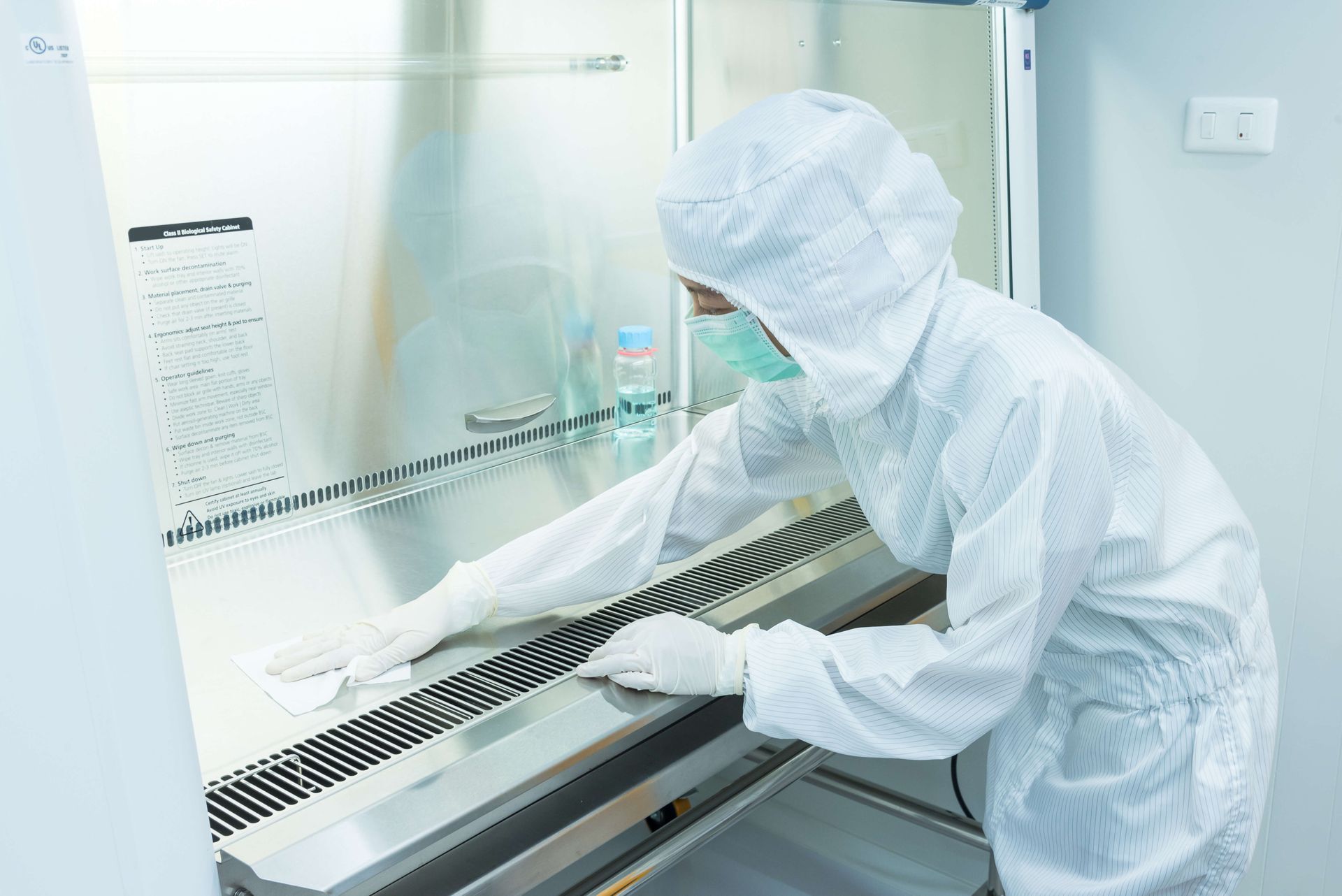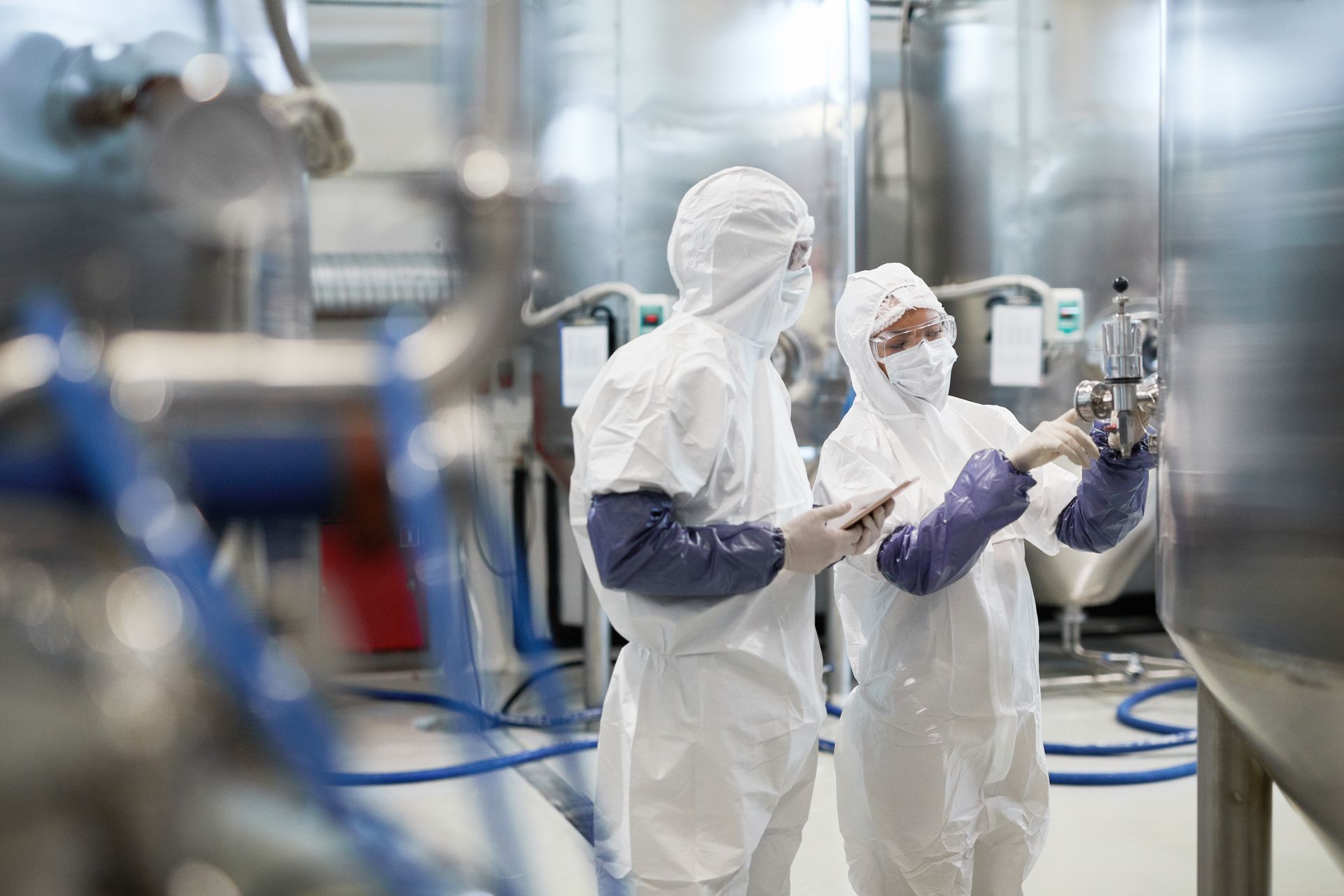Energy Efficiency Strategies for Cleanrooms

Introduction
Cleanrooms, crucial environments in industries like pharmaceuticals, biotechnology, semiconductor manufacturing, aerospace, and healthcare, are designed to minimize contamination and maintain stringent environmental controls. These spaces require high levels of energy input to maintain optimal conditions, such as precise temperature, humidity, air filtration, and pressure regulation. Cleanroom systems typically operate continuously, making them some of the most energy-intensive spaces within manufacturing and research facilities.
While cleanrooms are designed with safety, product integrity, and contamination control in mind, it is equally important for businesses to consider energy efficiency. With rising energy costs, growing environmental concerns, and increasing regulatory pressure, cleanroom operators must find ways to minimize energy consumption without compromising performance, cleanliness, or safety. This article explores key strategies and technologies for improving energy efficiency in cleanroom operations, focusing on sustainable approaches that can reduce operating costs, enhance environmental impact, and improve overall system performance.
The Energy Demands of Cleanrooms
Before diving into strategies for energy efficiency, it's important to understand why cleanrooms are so energy-demanding. Cleanrooms typically require:
- HVAC Systems: Cleanrooms rely on high-efficiency heating, ventilation, and air conditioning (HVAC) systems to maintain precise temperature, humidity, and air quality standards. HVAC systems must continuously filter and circulate large volumes of air, ensuring that the air is free from particles, microorganisms, and chemical contaminants. This high airflow and filtration requirement consumes a significant amount of energy.
- Air Filtration: Cleanrooms use specialized filtration systems, such as HEPA (High-Efficiency Particulate Air) or ULPA (Ultra-Low Penetration Air) filters, to remove airborne particles. These filters need to be replaced or cleaned regularly, and the ventilation systems must work harder as filters become clogged, leading to higher energy usage.
- Pressure Control: Cleanrooms must maintain precise pressure differentials to prevent contaminants from entering the space from adjacent areas. This requires continuous control and monitoring of airflow, which is energy-intensive.
- Lighting and Equipment: Cleanrooms also use specialized lighting and equipment that are designed for cleanroom environments. These may include bright, flicker-free LED lights, which are energy-efficient but still add to the overall energy load, especially when the cleanroom is operational 24/7.
Why Energy Efficiency Matters in Cleanrooms
Energy efficiency in cleanrooms is vital for several reasons:
- Cost Savings: Given the constant energy demand for HVAC systems, filtration, lighting, and equipment, energy consumption in cleanrooms can account for a significant portion of a facility's total energy costs. Implementing energy-saving strategies can reduce electricity and heating/cooling expenses over time, helping businesses control costs.
- Environmental Responsibility: As businesses become more aware of their environmental impact, reducing energy consumption helps minimize carbon footprints. Many industries, particularly those in high-regulation sectors, are facing increasing pressure to demonstrate environmental stewardship and sustainability.
- Compliance with Regulations: Government regulations and industry standards for energy use are tightening. Cleanroom operators need to comply with these standards to avoid penalties or fines. Additionally, energy-efficient practices may also be mandated in certain sectors to align with sustainability goals and reduce overall environmental impact.
- Operational Performance: Inefficient energy systems can lead to unnecessary wear and tear on equipment, increased maintenance costs, and, in some cases, disruptions in cleanroom operations. Efficient systems are often more reliable and cost-effective to maintain.
Strategies for Improving Energy Efficiency in Cleanrooms
There are several strategies that cleanroom operators can implement to improve energy efficiency without compromising the integrity of the cleanroom environment. These strategies can be broadly categorized into operational, technological, and design-based approaches.
1. Optimizing HVAC Systems
Given that HVAC systems are the most energy-intensive component of a cleanroom, improving the efficiency of these systems should be a primary focus. Several techniques can enhance HVAC energy efficiency:
- Variable Air Volume (VAV) Systems: A variable air volume system adjusts the amount of airflow depending on the cleanroom's needs. By reducing airflow when less filtration is required (e.g., during periods of low activity), VAV systems help lower energy consumption. The system only increases airflow when high air exchange rates are necessary, such as during production or cleaning cycles.
- Demand-Controlled Ventilation (DCV): DCV adjusts ventilation rates based on real-time occupancy or contaminant levels. For instance, during periods when fewer people are in the cleanroom, or when the contaminants are minimal, the system can reduce airflow, saving energy. Sensors can be used to monitor CO2 levels, air quality, and particle counts to control the ventilation rates dynamically.
- Heat Recovery Ventilation (HRV): Heat recovery ventilation systems capture energy from the exhaust air and use it to precondition incoming air. This can significantly reduce the need for heating and cooling energy, as the HRV system recycles energy that would otherwise be wasted. In cold climates, this can reduce heating costs, while in warm climates, it reduces the cooling load.
- Airflow Optimization: Optimizing airflow through careful layout and design of air distribution systems can improve HVAC efficiency. Strategies include eliminating unnecessary ducts, reducing air leakage, and placing air inlets and outlets in optimal locations for effective air distribution. Proper sealing and insulation also ensure that air does not escape through cracks or gaps in the cleanroom envelope.
2. Energy-Efficient Filtration Systems
The filtration system is another significant energy consumer in cleanrooms. To improve energy efficiency, consider the following options:
- Filter Efficiency and Maintenance: The efficiency of filters plays a major role in how hard HVAC systems have to work. Choosing the right filter for the cleanroom’s needs—whether HEPA or ULPA—ensures optimal performance. Furthermore, regular maintenance, such as cleaning or replacing filters, reduces strain on HVAC systems and ensures that air filtration is both effective and energy-efficient.
- Low-Resistance Filters: Newer technologies have introduced low-resistance filters that require less power to move air through them. These filters maintain the high filtration standards necessary for cleanrooms but reduce the pressure drop across the filter, thereby reducing energy use.
- Modular Filter Banks: Modular filter banks allow for the addition or removal of filters as needed. This helps maintain airflow without overburdening the system. If the cleanroom’s requirements change (e.g., higher particle filtration or changing regulatory standards), the system can be adjusted without significantly impacting energy use.
3. Energy-Efficient Lighting
Lighting is an important component of cleanroom energy use. Cleanrooms often require bright, uniform lighting to ensure optimal working conditions. However, this can result in high energy consumption. To optimize lighting:
- LED Lighting: LED lighting is much more energy-efficient than traditional fluorescent lighting. LED bulbs consume less energy, last longer, and generate less heat. Additionally, LEDs can be integrated with smart lighting systems that adjust based on the time of day or occupancy, further reducing energy consumption.
- Motion Sensors and Timers: Installing motion sensors and timers can ensure that lights are only on when needed. For example, lights can automatically dim or turn off when no personnel are present in the cleanroom, which significantly reduces energy consumption without affecting operations.
- Daylight Harvesting: If the cleanroom has access to natural light, consider using daylight harvesting systems that adjust artificial lighting levels based on available natural light. This can reduce the amount of electricity needed to illuminate the space during daylight hours.
4. Energy-Efficient Equipment
Other energy-consuming equipment, such as sterilizers, autoclaves, and other machinery, also contributes to the overall energy usage of a cleanroom. To improve energy efficiency in equipment:
- Upgrading Equipment: Older equipment may not be optimized for energy use. Upgrading to newer, energy-efficient models can result in significant energy savings. For instance, modern sterilizers are designed to use less water, energy, and time compared to older models.
- Scheduling Equipment Use: In some cases, the timing of equipment use can affect energy consumption. For example, scheduling equipment like autoclaves to run during off-peak hours or during low-energy-demand periods helps reduce the overall energy load on the system.
5. Design Considerations for Cleanroom Energy Efficiency
The design phase offers many opportunities to incorporate energy efficiency into cleanroom operations. These strategies include:
- Room Layout: Properly designing the cleanroom layout can optimize airflow and minimize the need for excessive HVAC energy. The placement of equipment, personnel areas, and materials should be considered to ensure efficient air distribution, minimize contamination, and reduce energy use.
- Building Envelope: The cleanroom's exterior walls, windows, and roof should be well insulated to prevent heat loss in cold climates and heat gain in hot climates. Proper insulation reduces the heating and cooling demands of the HVAC system.
- Energy-Efficient Materials: The use of energy-efficient materials in the construction and design of cleanrooms, such as energy-efficient doors, windows, and walls, can help optimize energy use and prevent unnecessary energy loss.
Conclusion
Energy efficiency in cleanrooms is critical for reducing operational costs, improving environmental sustainability, and ensuring long-term operational performance. By implementing strategies such as optimizing HVAC systems, improving filtration efficiency, utilizing energy-efficient lighting, and upgrading equipment, cleanroom operators can significantly reduce their energy consumption while maintaining the cleanliness and functionality required for sensitive manufacturing processes.
Cleanroom design, including room layout and material selection, also plays an important role in achieving energy efficiency. Ultimately, by adopting these energy-efficient strategies, cleanroom operators can not only lower costs but also contribute to broader sustainability goals and comply with increasingly stringent regulatory requirements.
Read more: All About Cleanrooms - The ultimate Guide






